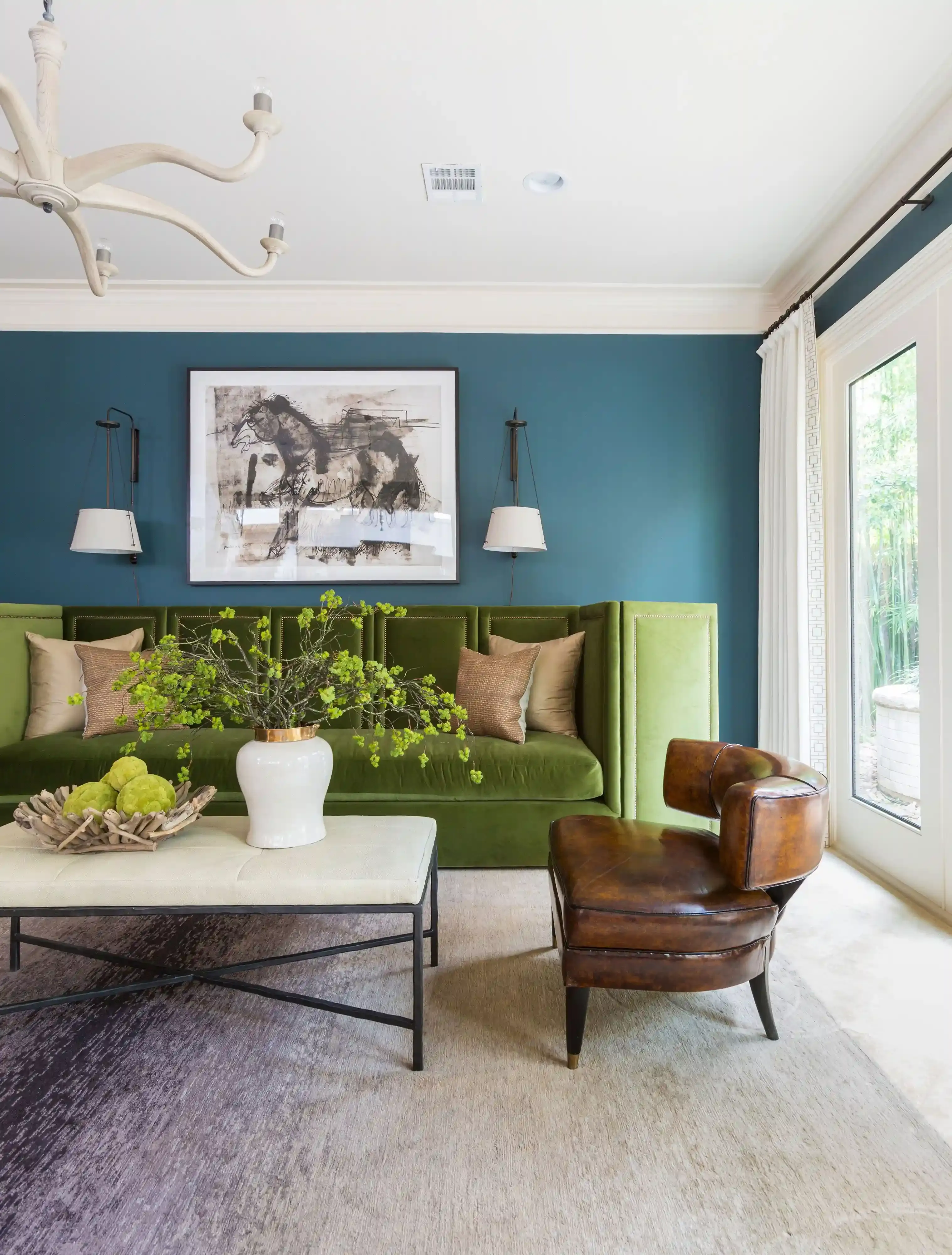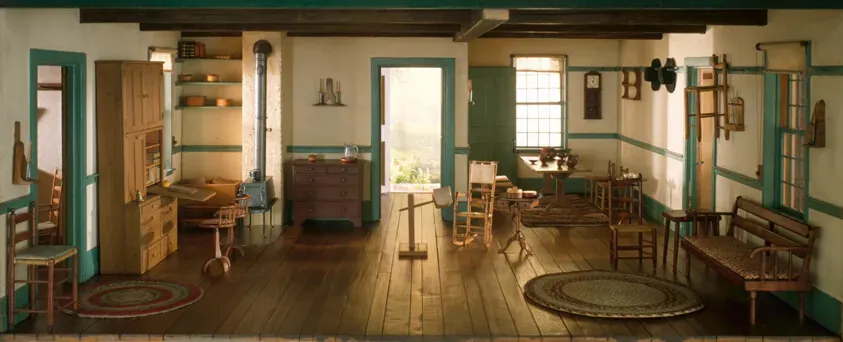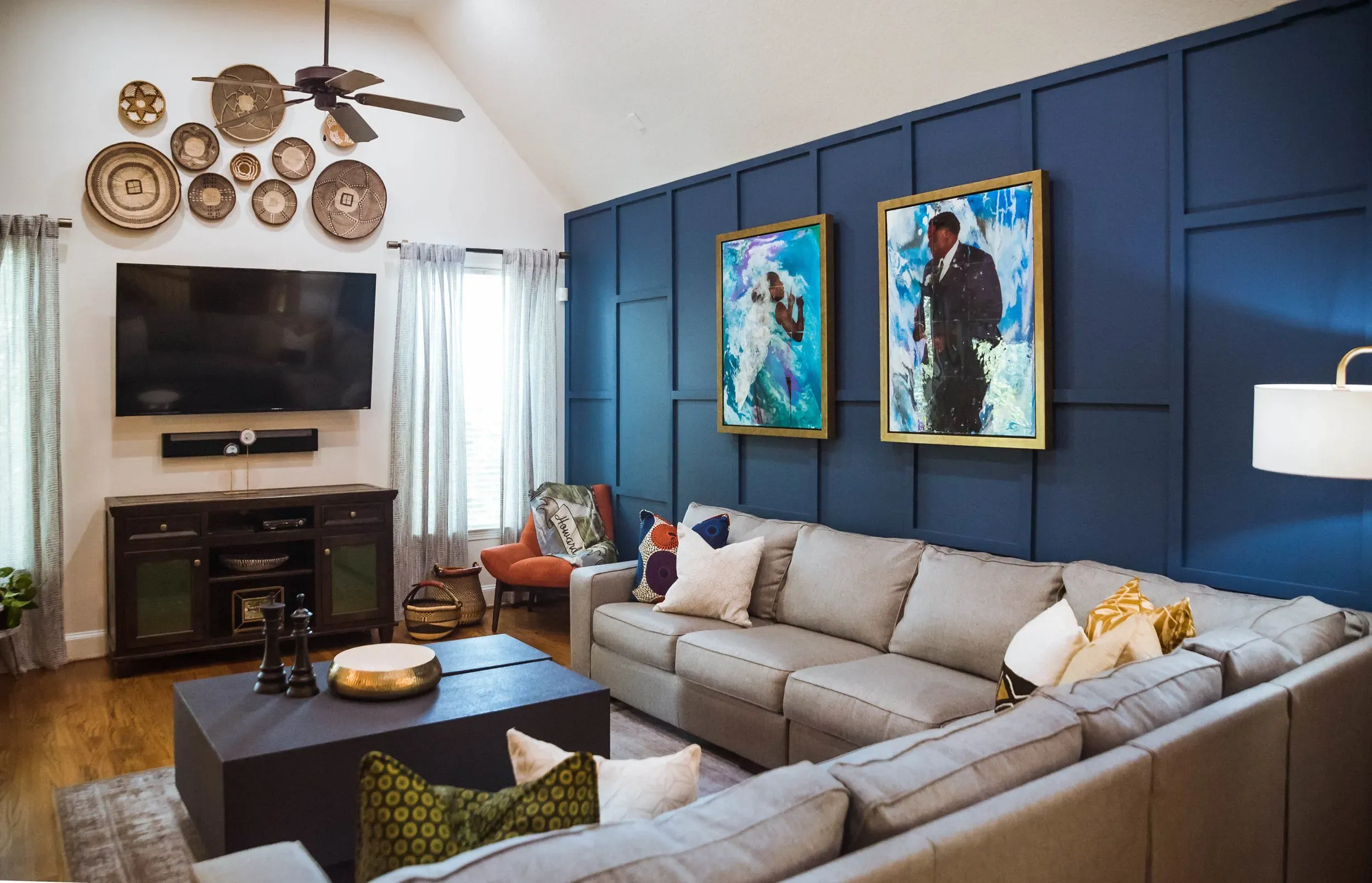Table of Contents
Does your living room feel a bit…beige? Like it’s functional, sure, but it lacks that punch, that specific character that says "this is me"? You've arranged the sofa, hung some pictures, maybe even added a new rug, but something still feels a little flat. Before you contemplate a full-scale renovation or an expensive furniture overhaul, consider this: the power of a single wall.
Why Bother with Accent Wall Ideas for Living Room?

Why Bother with Accent Wall Ideas for Living Room?
Breaking the Beige Barrier
Look, let's be honest. Most living rooms start life as a box painted a shade of off-white or builder-grade beige. It's practical, sure, but about as exciting as watching paint dry. You put in your furniture, hang some art, and it's... fine. But does it feel like *your* space? Does it have any real character or energy? Probably not. This is precisely where exploring **accent wall ideas for living room** comes into play. It's your chance to make a statement, to inject some personality without having to commit to painting the entire room a daring color. Think of it as dipping your toe in the design pool before diving headfirst.
Creating a Focal Point, Not Just Another Wall
Every well-designed room needs a focal point – something that immediately grabs your attention and gives the eye a place to rest. In many living rooms, this might be a fireplace, a large window, or a particularly striking piece of art. But what if you don't have a grand fireplace or million-dollar view? An accent wall can *become* that focal point. By applying a bold color, texture, or pattern to one wall, you instantly create visual interest and draw the eye to that specific area. It helps define the space and gives the room a sense of purpose beyond just holding furniture.
- Adds visual depth and dimension.
- Highlights architectural features (or creates them where none exist).
- Defines zones within an open-concept space.
- Offers a relatively low-risk way to experiment with bold design.
- Makes your room feel intentionally designed, not just decorated.
High Impact, Lower Effort & Cost
Compared to buying all new furniture or undertaking a major renovation, adding an accent wall is surprisingly impactful for the effort and money involved. A few gallons of paint, some rolls of wallpaper, or a weekend spent installing simple molding can utterly transform the feel of your living room. It’s a project most people can tackle themselves, saving on labor costs. And if you decide you hate it down the line? Repainting one wall is a lot less painful than redoing an entire room or replacing expensive pieces. It's a design gamble with pretty good odds and a low buy-in.
Paint Power: Simple & Bold Accent Wall Ideas for Living Room
Picking Your Punchy Hue
so you've decided to brave the world beyond beige. Good for you. The simplest, most accessible way to create stunning **accent wall ideas for living room** is with paint. It’s relatively cheap, widely available, and if you mess up (and trust me, we've all been there with a wonky line or two), it's fixable. The first step, and often the hardest, is picking the color. Do you go deep and dramatic, like a moody navy or forest green that wraps the room in coziness? Or perhaps something vibrant and energetic, like a coral or a sunny yellow that screams personality? Consider the feeling you want the room to evoke and how the potential accent color plays with your existing furniture and decor. Don't just pick a color you *like*, pick one that *works* in the context of your specific living room.
Going Bold with Stripes, Shapes, or Scenes
Paint isn't just for solid blocks of color, though that's a perfectly valid and effective approach. Once you're comfortable with a brush, you can kick those **accent wall ideas for living room** up a notch. Think about geometric patterns – simple wide stripes, chevrons, or even abstract shapes can add dynamic energy. All you need is some painter's tape and a steady hand (or a patient friend). Or, if you're feeling ambitious, a painted mural can turn a wall into a work of art. It could be a simple landscape, a stylized floral, or something completely abstract. It takes more planning and effort, sure, but the result is a truly unique statement piece that no one else will have.
Here are a few paint-based accent wall options:
- Solid bold color (navy, emerald green, deep teal, charcoal)
- Geometric patterns (stripes, chevrons, hexagons)
- Color blocking (dividing the wall into sections of different colors)
- Painted mural or scene
- Ombre or gradient effect
Prepping and Painting Like a Pro (Almost)
Alright, you've got your color (or colors) and your concept. Now for the actual painting. Don't skip the prep work. Seriously, this is where most DIY accent wall dreams turn into nightmares. Clean the wall thoroughly to remove dust and grime. Fill any holes or cracks and sand them smooth. Use good quality painter's tape to protect adjoining walls, trim, and the ceiling line – press it down firmly to prevent bleeds. Buy decent paint and the right tools (a good brush for cutting in, a roller for the main area). Apply thin, even coats, letting each coat dry completely before applying the next. It takes patience, but the crisp lines and smooth finish are worth the extra time. Remember, even simple **accent wall ideas for living room** require a bit of care to look their best.
Beyond Paint: Textured & Panelled Accent Wall Ideas for Living Room

Beyond Paint: Textured & Panelled Accent Wall Ideas for Living Room
Adding Depth with Wallpaper and Plaster
Alright, so maybe a flat color feels too…flat. If you want your **accent wall ideas for living room** to literally pop off the wall, texture is your friend. Wallpaper has come a long way from your grandma's floral prints (unless that's your jam, no judgment). Think grasscloth for a natural, earthy vibe, or maybe a bold geometric pattern with a raised flocking. There are even wallpapers that mimic brick, concrete, or wood planks, offering the look without the weight or installation hassle. Beyond paper, consider textured plaster techniques. Venetian plaster gives a smooth, marble-like finish, while a skip trowel or knockdown texture adds a more rustic, tactile feel. These methods require a bit more skill than just rolling paint, but the visual and physical depth they add can be stunning.
Bringing Structure with Paneling and Molding
Want to introduce some classic architectural detail or a modern geometric pattern? Paneling and molding are fantastic **accent wall ideas for living room**. Simple board and batten can add a farmhouse feel, while more intricate wainscoting or picture frame molding brings a touch of traditional elegance. On the contemporary side, you can create custom geometric designs using thin strips of wood or MDF, painted to match or contrast the wall color. I once helped a friend install a simple vertical slat wall in her living room – took a weekend, cost less than a new armchair, and completely transformed the feeling of the space from generic apartment to intentional design statement. It’s about adding dimension and shadow lines that paint alone can't achieve.
- Grasscloth wallpaper for natural texture
- Textured geometric or damask wallpapers
- Venetian or other decorative plaster techniques
- Board and batten paneling
- Wainscoting or picture frame molding
- Geometric wood slat designs
- Reclaimed wood planks for a rustic look
Exploring Other Materials: Tile, Stone, and More
Who says accent walls are limited to paint and wood? For truly impactful **accent wall ideas for living room**, consider materials typically found elsewhere in the house. Stacked stone or brick veneers can bring an organic, grounding element, perfect for a feature wall behind a fireplace or media console. Decorative tiles, whether ceramic, porcelain, or even metal, can create intricate patterns and textures, though this is definitely a more ambitious project. Even unexpected materials like cork tiles or fabric panels can add unique texture and visual interest. The key is choosing a material that complements the rest of your decor and is appropriate for the specific wall and room function. Don't tile the wall where you plan to hang heavy art unless you've planned for it.
Placement Matters: Choosing the Right Spot for Accent Wall Ideas for Living Room

Placement Matters: Choosing the Right Spot for Accent Wall Ideas for Living Room
Where Does Your Eye Go First?
you've got visions of bold color or cool texture dancing in your head for your **accent wall ideas for living room**. But which wall? This isn't a game of darts; you can't just pick one blindfolded. The right wall is usually the one that naturally draws your eye when you enter the room. Is it the wall behind your sofa, which is likely the largest piece of furniture? Is it the wall with the fireplace? Maybe it's the wall opposite the main entrance? Think about the room's layout and how you use the space. The wall you choose should ideally serve as a backdrop to a key furniture arrangement or architectural feature, becoming the star without making the rest of the room feel like a supporting cast member crammed into the corner.
Common Pitfalls and How to Avoid Them

Common Pitfalls and How to Avoid Them
Choosing the Wrong Wall (It's More Common Than You Think)
you're hyped about your **accent wall ideas for living room**. You've picked a killer color or a cool texture. But then you just pick... a wall. Any wall. Maybe it's the smallest one, or the one with the most doors and windows breaking it up. This is a classic rookie error. An accent wall works best when it's a natural focal point, the wall your eye lands on when you walk in. If you choose a wall that's chopped up by architectural features or isn't central to the room's layout, your accent wall can end up looking awkward and disjointed, like an afterthought rather than a deliberate design choice. It doesn't get the chance to truly anchor the space.
Overdoing It: When One Wall Becomes Too Much
Another trap people fall into with **accent wall ideas for living room** is getting *too* enthusiastic. You do one wall, love it, and think, "Hey, two would be twice as good, right?" Wrong. An accent wall is called an *accent* for a reason. Its power comes from being singular, a standout against the calmer backdrop of the other walls. Painting two walls different bold colors, or putting a busy pattern on one and a strong texture on another, can make the room feel chaotic and overwhelming. Instead of creating a focal point, you create visual noise. Keep it to one wall, maybe two if they are adjacent in a very large or unusually shaped room and the design is cohesive, but generally, less is more when it comes to making a statement.
- Don't pick a wall with too many doors or windows.
- Avoid accenting walls that aren't naturally visible upon entering.
- Stick to one accent wall in most standard-sized rooms.
- Ensure the accent wall complements, not clashes with, the other walls.
- Test colors or materials with samples before committing.
Making Your Mark
So, we've covered the ground rules and some ways to tackle those accent wall ideas for your living room. The goal here wasn't to promise some mystical design awakening, but to point out that one well-considered wall can do a surprising amount of heavy lifting for a room that feels a little tired. It’s not a substitute for a functional layout or furniture that actually fits, but a strategic spot of color, texture, or pattern can genuinely shift the visual focus and inject some much-needed personality. Pick your wall, put some thought into it, and see if it doesn't make walking into your living room feel a little less... expected.
